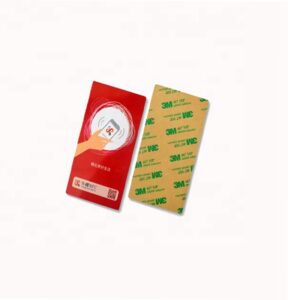Table of Contents
PrebaciUvod
In today’s competitive business landscape, choosing the right RFID hardware is crucial for achieving efficient operations and ensuring business success. The effectiveness of an RFID system hinges on how well its components align with the business’s unique requirements and operational environment. This guide aims to help businesses gain a thorough understanding of their needs and make well-informed decisions when selecting RFID hardware.

Identifying the Application Scenario
When evaluating the application scenarios for RFID technology, it’s essential to consider several factors:
Specific Application Scenarios
Clarify the environments and methods in which RFID will be deployed. Typical scenarios include warehousing, logistics, retail, manufacturing, and asset tracking. For instance, retail stores might use RFID for inventory management, whereas warehouses may utilize RFID for real-time goods tracking.
Expected Read Range and Data Volume
Assess the necessary read range (short, medium, or long) and estimate the volume of data and number of items to be tracked. This evaluation helps in selecting appropriate RFID tags and readers to satisfy data processing and tracking requirements.
Selecting RFID Tags
RFID oznake are the pivotal components as they store and transfer crucial data. The selection of tags involves:
Types of Tags
- Pasivne oznake: These are cost-effective and suitable for short-range applications.
- Semi-Passive Tags: These offer medium range and come with an internal battery for enhanced performance.
- Aktivne oznake: These provide long-range capabilities and real-time tracking but are more expensive.
Environmental Adaptability
Factor in the environmental conditions such as temperature, humidity, and exposure to chemicals. Opt for tags that are durable and resistant to weather changes to ensure reliable performance in various environments. For example, high-temperature resistant RFID tags work well in temperature extremes from -50℃ to 200℃, making them ideal for both high and low-temperature environments.
RFID tags used in high humidity or moist conditions should be waterproof. Select tags with a waterproof coating or sealed design to prevent damage and data loss. For instances of chemical exposure, choose chemically resistant tags to ensure longevity and reliability. Chemically resistant RFID tags can withstand a pH range of 0 to 14, suitable for applications like medical devices, automotive, and electronics.
Data Storage and Transmission Needs
Identify the storage capacity and transmission speed required for the tags. For applications needing extensive data storage or rapid data transmission, opt for tags with higher storage capacity and faster transmission rates.
Compatibility and Programmability
Ensure that the chosen tags are compatible with existing RFID čitači for smooth operations. Also, consider if the tags support programming functions for easy configuration and management.
Choosing RFID Readers
RFID readers are crucial for communicating with tags and capturing data. The right reader can significantly influence the system’s performance and efficiency. Key considerations when choosing RFID readers include:
Types of RFID Readers
- Fixed Readers: Ideal for static applications like entry/exit gates, production lines, or point-of-sale systems. These readers typically offer high read range and speed, suitable for environments needing continuous monitoring and automated processing.
- Mobile Readers: Handheld devices that offer flexibility for inventory checks, fieldwork, and mobile data collection. They are convenient for frequent movement or use in different locations, such as inventory counting in retail or tracking cargo in logistics.
Reader Compatibility and Scalability
Ensure the reader is compatible with the selected tags regarding frequency range, communication protocol, and reading distance. The reader should integrate seamlessly with the current system for efficient data transmission and processing. Choosing a scalable reader allows for future expansions, such as adding more readers or enhancing data processing capabilities, helping businesses meet future challenges and opportunities.
Choosing an RFID Antenna
The antenna in an RFID system is critical to overall performance. Different antennas suit various applications, so selecting the right antenna is key for system efficiency.
Types of Antennas
- Linearly Polarized Antennas: Provide longer read ranges but require directional alignment of tags. Suitable for applications needing precise positioning, like conveyor belt systems and production lines.
- Circularly Polarized Antennas: Can read tags in multiple directions. Though they have a shorter read range, they excel in scenarios where tag direction varies, such as retail item management. These antennas offer flexibility and improved read accuracy in multi-directional reading environments.
Selecting an antenna that matches specific application requirements is essential. For instance, linearly polarized antennas are ideal for conveyor systems due to their long-range and directional consistency, while circularly polarized antennas are better for retail environments with varied item orientations.
Considering Additional RFID Hardware
Beyond tags, readers, and antennas, other components like printers and modules are also significant for the RFID system’s overall performance.
RFID Printers
Used for printing and encoding labels, RFID printers cater to large-scale label production or on-demand printing. They can enhance label production speed and quality, suitable for diverse applications.
RFID Modules
These integrate RFID functions into existing systems or custom equipment, offering flexibility and convenience for specific application needs and enhancing system functionality and scalability.
Zaključak
Selecting the right RFID hardware involves understanding your business’s specific needs, evaluating available options for tags, readers, antennas, and other components, and choosing reliable suppliers. By considering these key components, businesses can implement an efficient, flexible, and scalable RFID system that enhances operational efficiency and competitiveness.
